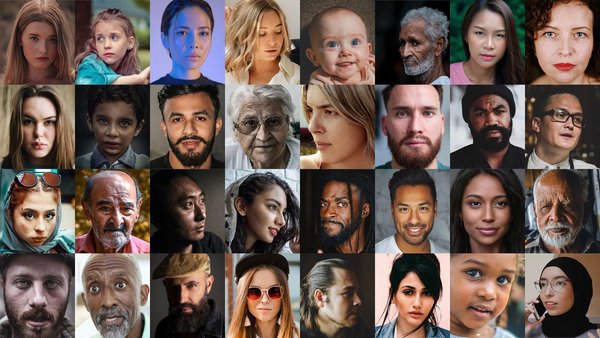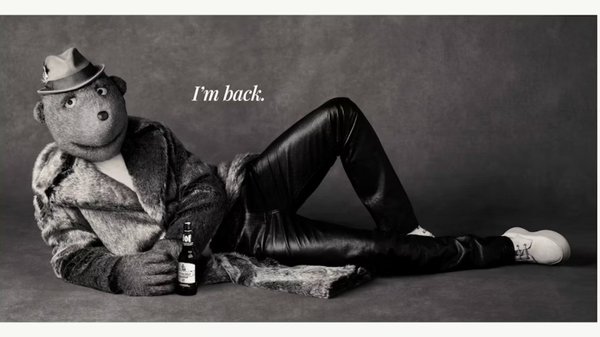Why comments are the new creative brief /
We Are Social's executive editorial director, Charlie Cottrell, explains why online comments sections can be a strategist's secret weapon
Contagious Contributor
/
A young man strolls to the snack table and finds himself with one hand wedged into a can of Pringles. ‘Don’t worry,’ says his grandpa, ‘it happens to the best of us; surgeons, airport ground crew, Meghan Trainor…’. This gently euphemistic ad was Pringles’ offering for Super Bowl season and it has been a hit with fans. ‘As someone who eats Pringles consistently, I can relate to this. This is hilarious!’ says one commenter on YouTube. ‘I laughed so hard I popped a hernia. No word of a lie,’ says another.
The genius behind the #StuckInPringles ad, created by Grey New York, is that it takes a conversation that is happening on social media and uses the magic of big-budget advertising to explode the joke. People on social love to see their jokes played back to them; it validates their sense of humour, and who doesn’t love to be told they’re funny? The trials of getting your hand stuck in a can of Pringles is a long-running meme. It’s so much a part of conversational lore around the brand that there are arguments around its origin story. Some fans argue it pre-dates the internet and track ‘hand-stuck-in-can’ back to the 1994 movie Clerks. There are whole subreddits devoted to it.
Why does this matter? Because if you’re able to pin an idea on something fans are already talking about, the chance that it will fly in the conversationally powered spaces of social media platforms is vastly increased. And that’s important because getting consumers talking on social is how you make or break a modern brand. Pringles have taken that deep understanding of fans a step further and put the social conversational insight right at the heart of an above-the-line execution. That, to me, is a sign of a brand that knows how to engage their audience.
Which brings me to the other stand out detail in the fan’s comment on the Pringles ad: ‘I can relate to this,’ they say. If you are a brand who has recently written a brief targeting 18-24 year-olds, you need to lean into this statement because ‘relatability’ is the currency of social media for this demographic. People drop ‘relatable’ in the comments of content from creators they love. It’s the high-five of TikTok culture. Whatever your brand, whatever your product, if you want to land with a GenZ audience you need to find a way to bake relatability into your approach.
Charlie Cottrell, We Are Social
The shortcut to achieving this is right there for you, in the millions upon millions of conversations they are having online. These are the strategist’s secret weapon. They’re personal, they’re niche, they give you a diversity of perspective you might not have in your team, and they’re refreshed daily. Hourly even. Tapping into comments effectively requires you to deploy two things: some really great social listening and a removal of ego. One of these is often easier to achieve than the other.
There’s a phrase floating around the industry – ‘comments are the new creative brief’. It’s exciting because it acknowledges both a shift in influence from the brand to the audience and also an understanding of how the relationship between the two is changing. There’s an appetite, perhaps even an expectation, from young consumers that they can co-create their experiences with brands – this might be as simple as knowing their customer service comments will be actioned but also starts to come into play when thinking about things like developing products, having an active role in creative campaigns and, most critically, seeing themselves reflected in the marketing of the brands they care about.
This is not new news to social natives. Look at any of the huge YouTube creators’ channels and you’ll see this relationship has been in action for years: fans asking creators for films on certain topics, creators asking their fans what they want to see more of and then making it. This interplay between the talent (the brand) and the fan (the consumer) is now an expectation; it’s repeated across social channels. We see it with the explosion of new talent on TikTok, we see it happening with music artists on Discord, co-creating albums together, then launching them into a ready and engaged market. What is on offer is constant feedback from a self-selected focus group and if you choose to listen to it there’s a mutual benefit. The fan feels seen and rewarded and the creator knows their content or campaign is likely to be successful.
Even without an economic downturn and the related slashing of budgets, we know how important it is to know your consumer. A lot of smart people have been looking at a lot of data points to help them make ever more informed choices about how to make and distribute their marketing efforts. While adtech can tell us who is seeing our ads, where they live, what their reported interests are and much more, it can’t tell us what they think and feel. The best advertising has always been the stuff that ‘hits you in the feels’.
In social, where expression of shared experiences catalyses how ideas and messages travel, being able to evoke an emotional response offers brands real and authentic impact with their audience. If you want to be the brand of choice, you have to be talked about. If you want to be talked about, you have to be relatable. If you want to be relatable, you have to get into the comments and start listening. Build the brief from there.
Want more of the same? /
We don’t just write about best-in-class campaigns, interviews and trends. Our Members also receive access to briefings, online training, webinars, live events and much more.







